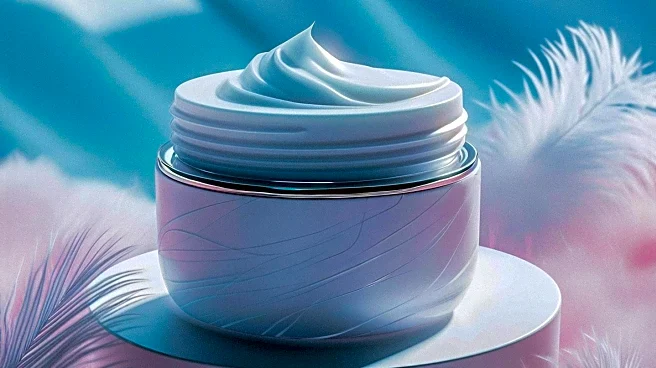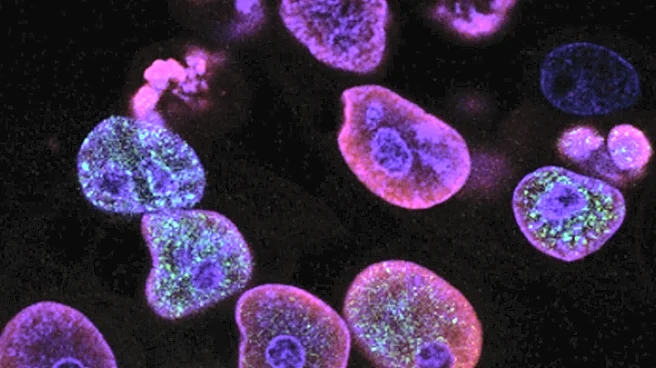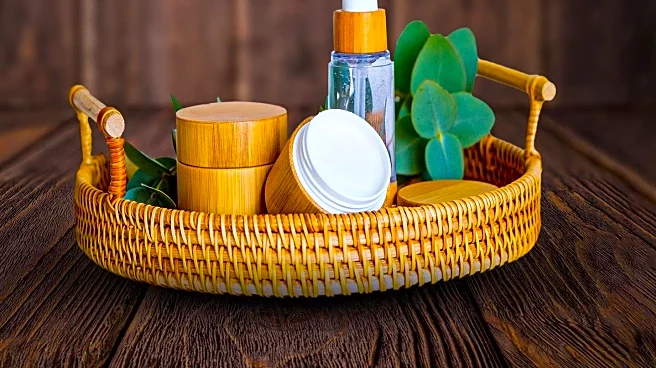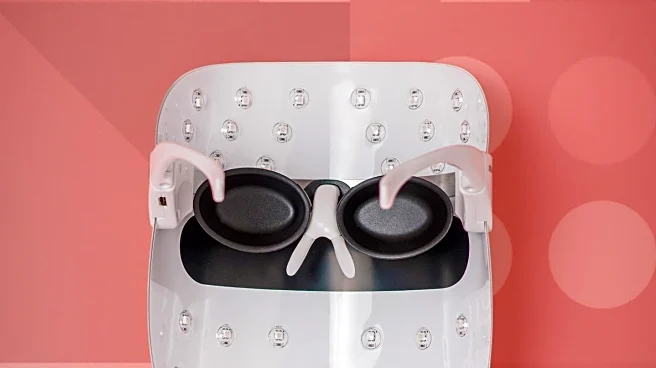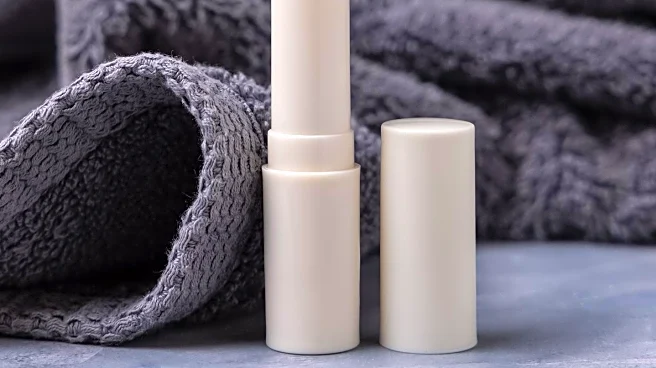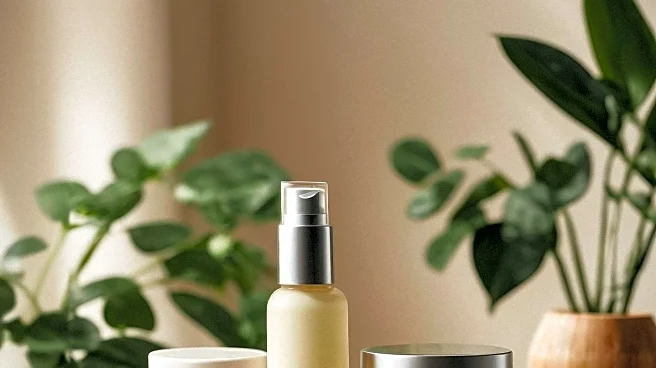What's Happening?
Sebaceous filaments, often mistaken for blackheads, are tubular structures in the skin that help transport sebum to the surface, maintaining moisture and skin barrier integrity. Dermatologists emphasize
their normalcy and importance in skin health, despite their aesthetic appearance. Unlike blackheads, sebaceous filaments are not a form of acne and are crucial for skin lubrication. They are most visible in areas with high sebum production, such as the T-zone. Treatments to minimize their appearance include proper facial hygiene, retinoids, sunscreen, clay masks, and professional facials.
Why It's Important?
Understanding the difference between sebaceous filaments and blackheads can prevent unnecessary skin trauma from improper treatment. Educating the public on skin health promotes better skincare practices and reduces stigma around natural skin features. The emphasis on maintaining skin health through non-invasive methods supports the skincare industry, encouraging the use of products like retinoids and sunscreens. This knowledge empowers individuals to make informed decisions about their skincare routines, potentially reducing the demand for invasive procedures.
What's Next?
As awareness of sebaceous filaments grows, skincare brands may develop targeted products to address their appearance. Dermatologists might focus on educating patients about the importance of skin health and the role of sebaceous filaments. The skincare industry could see an increase in demand for products that support natural skin functions, such as exfoliating acids and oil-based cleansers. Continued research into skin anatomy and health may lead to new treatments and innovations in skincare.
Beyond the Headlines
The conversation around sebaceous filaments highlights broader issues of beauty standards and societal pressures to achieve 'perfect' skin. Emphasizing natural skin features challenges unrealistic beauty ideals and promotes acceptance of diverse skin types. Ethical considerations arise regarding the marketing of skincare products that promise to 'fix' normal skin features. The focus on skin health rather than aesthetics encourages a shift towards holistic beauty practices.
